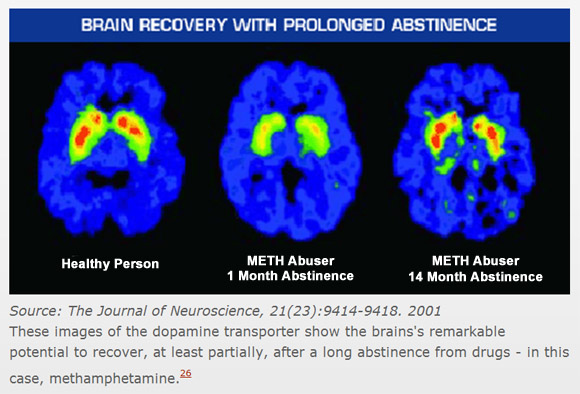Substance abuse and addiction (alcohol, nicotine, and illegal drugs) cost Americans one half trillion dollars annually, considering their combined medical, economic, criminal, and social impact. Every year, abuse of illicit drugs and alcohol contributes to the death of more than 100,000 Americans, while tobacco is linked to an estimated 440,000 deaths per year. Accelerated by the sharp increase in prescription narcotic overdoses, drug deaths now outnumber traffic fatalities in the United States. Prescription and over-the-counter (OTC) drugs are, after marijuana and alcohol, the most commonly abused substances by Americans 14 and older.
People of all ages suffer the harmful consequences of drug abuse and addiction. Babies exposed to legal and illegal drugs in the womb may be born premature and underweight. This drug exposure can slow the child's intellectual development and affect behavior later in life. Adolescents who abuse drugs often act out, do poorly academically, and drop out of school. They are at risk of unplanned pregnancies, violence, and infectious diseases. Adults who abuse drugs often have problems thinking clearly, remembering, and paying attention. They often develop poor social behaviors as a result of their drug abuse, and their work performance and personal relationships suffer. Parents' drug abuse often means chaotic, stress-filled homes and child abuse and neglect. Such conditions harm the well-being and development of children in the home and may set the stage for drug abuse in the next generation. The consequences of drug abuse are vast and varied and affect people of all ages.
| Addiction | Tolerance | Compulsion |
| Psychological Dependence | Physiological Dependence | Withdrawal |
| Obsession | Codependence | Neurotransmitter |
| Drug Misuse | Drug Abuse | Dopamine |
| Addiction: Basic Training |
- The Basics Defined:
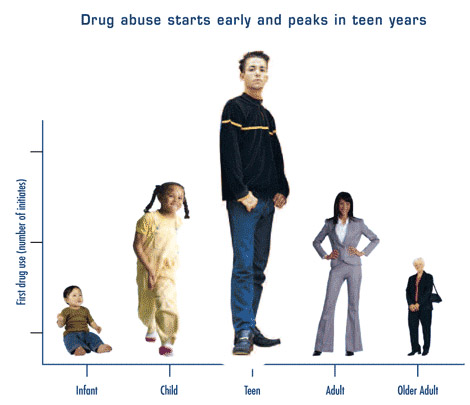
- Addiction:
- The continued involvement with a substance or activity despite ongoing negative consequences.
- Addiction is characterized by four common signs or
symptoms:
- Compulsion:
- Obsession (excessive preoccupation) with a behavior or substance.
- Lack or loss of control:
- Diminished decision-making abilities dealing with a substance or behavior.
- Erosion of social or behavior boundaries concerning a substance or behavior.
- Negative consequences:
- Damage or trouble with social, physical, family, work, or school aspects of a person's life that do not occur with healthy involvement in a substance or behavior.
- Denial:
- The inability to see or perceive that the behavior is self-destructive.
- Compulsion:
- Habit:
- A pattern of behavior that develops through practice or repetition.
- A habit manifests itself regularly, and often without conscious recognition.
- A person can have control over his/her habits, and the long time outcomes do not have negative consequences.
- Drug Addiction:
- A chronic, relapsing brain disease that is characterized by compulsive drug seeking and use, despite harmful consequences.
- It is considered a brain disease because drugs change the brain; its structure and how it works.
- These brain changes can be long lasting, and can lead to the harmful behaviors seen in people who abuse drugs.
- Drug Abuse:
- The repeated use of a drug for a non-medical purpose.
- Drug Misuse:
- The inappropriate use of a prescribed or non-prescribed medicine.
- Using a medicine for a non-intended purpose, or using a medicine for the right purpose, but wrong dosage.
- Illicit Drug:
- A substance that is manufactured, distributed, and consumed illegally; unlicensed, unlawful, or not legally permitted.
- Designer Drug:
- Refers to drugs that are created in a laboratory (typically, an “underground,” or secret, illegal lab).
- A designer drug is created by changing the properties of a drug that comes from a plant—such as cocaine, morphine, or marijuana, using the tools of chemistry.
- The resulting “designer” drugs typically have a new, different effect on the brain or behavior.
- Addiction:
- Why People Take Drugs:
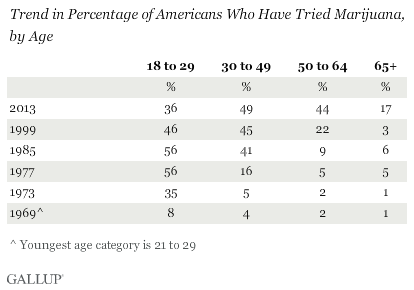
- To feel good. Most abused drugs produce intense feelings of pleasure. This initial sensation of euphoria is followed by other effects, which differ with the type of drug used. For example, with stimulants such as cocaine, the "high" is followed by feelings of power, self-confidence, and increased energy. In contrast, the euphoria caused by opiates such as heroin is followed by feelings of relaxation and satisfaction.
- To feel better. Some people who suffer from social anxiety, stress-related disorders, and depression begin abusing drugs in an attempt to lessen feelings of distress. Stress can play a major role in beginning drug use, continuing drug abuse, or relapse in patients recovering from addiction.
- To do better. The increasing pressure that some individuals feel to chemically enhance or improve their athletic or cognitive performance can similarly play a role in initial experimentation and continued drug abuse.
- Curiosity and "because others are doing it." In this respect adolescents are particularly vulnerable because of the strong influence of peer pressure; they are more likely, for example, to engage in "thrilling" and "daring" behaviors.
- Factors Influencing Addiction:
- No single factor determines whether a person will become
addicted to drugs. The overall risk for addiction is impacted by
the biological makeup of the individual; it can even be
influenced by gender or ethnicity, his or her developmental
stage, and the surrounding social environment.
- Biological Factors:
- Scientists estimate that genetic factors account for between 40 and 60 percent of a person's vulnerability to addiction, including the effects of environment on gene expression and function.
- Adolescents and individuals with mental disorders are at greater risk of drug abuse and addiction than the general population.
- Environmental Factors:
- Home and Family. The influence of the home environment is usually most important in childhood. Parents or older family members who abuse alcohol or drugs, or who engage in criminal behavior, can increase children's risks of developing their own drug problems.
- Peer and School. Friends and acquaintances have the greatest influence during adolescence. Drug-abusing peers can sway even those without risk factors to try drugs for the first time. Academic failure or poor social skills can put a child further at risk for drug abuse.
- Change: Risk of drug abuse increases greatly during adolescence during times of transition, such as changing schools, moving, or divorce.
- Early Use:
- Although taking drugs at any age can lead to addiction, research shows that the earlier a person begins to use drugs the more likely they are to progress to more serious abuse.
- This may reflect the harmful effect that drugs can have on the developing brain; it also may result from a variety of early biological and social vulnerability factors, including genetic susceptibility, mental illness, unstable family relationships, and exposure to physical or sexual abuse.
- Method of Administration:
- Smoking a drug or injecting it into a vein increases its addictive potential.
- Both smoked and injected drugs enter the brain within seconds, producing a powerful rush of pleasure; this intense "high" can fade within a few minutes, taking the abuser down to lower, more normal levels.
- Scientists believe that this low feeling drives individuals to repeated drug abuse in an attempt to recapture the high pleasurable state.
- Biological Factors:
- No single factor determines whether a person will become
addicted to drugs. The overall risk for addiction is impacted by
the biological makeup of the individual; it can even be
influenced by gender or ethnicity, his or her developmental
stage, and the surrounding social environment.
- An Overview of the Brain:
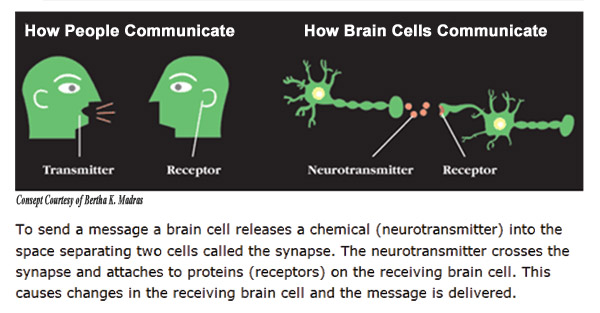
- The human brain is the most complex organ in the body; a
three-pound mass of gray and white matter, it is at the center
of all human activity.
Drugs can alter important brain areas that are necessary for
life-sustaining functions and can drive the compulsive drug
abuse that marks addiction. Brain areas affected by drug abuse
include:
- The brain stem controls basic functions critical to life, such as heart rate, breathing, and sleeping.
- The limbic system contains the brain's reward circuit -
it links together a number of brain structures that control
and regulate our ability to feel pleasure.
- Feeling pleasure motivates us to repeat behaviors such as eating - actions that are critical to our existence.
- The limbic system is activated when we perform these activities - and also by drugs of abuse.
- In addition, the limbic system is responsible for our perception of other emotions, both positive and negative, which explains the mood-altering properties of many drugs.
- The cerebral cortex is divided into areas that control specific functions. Different areas process information from our senses, enabling us to see, feel, hear, and taste. The front part of the cortex, the frontal cortex or forebrain, is the thinking center of the brain; it powers our ability to think, plan, solve problems, and make decisions.
- The human brain is the most complex organ in the body; a
three-pound mass of gray and white matter, it is at the center
of all human activity.
Drugs can alter important brain areas that are necessary for
life-sustaining functions and can drive the compulsive drug
abuse that marks addiction. Brain areas affected by drug abuse
include:
- How Drugs Work in the Brain:
- Drugs are chemicals that tap into the brain's communication system and interfering with the way nerve cells normally send, receive, and process information.
- Some drugs, such as marijuana and heroin, can activate
neurons because their chemical structure mimics that of a
natural neurotransmitter.
- This similarity in structure "fools" receptors and allows the drugs to lock onto and activate the nerve cells.
- Although these drugs mimic brain chemicals, they don't activate nerve cells in the same way as a natural neurotransmitter, thus they lead to abnormal messages being transmitted through the network.
- Other drugs, such as amphetamine or cocaine, can cause the
nerve cells to release abnormally large amounts of natural
neurotransmitters or prevent the normal recycling of these brain
chemicals.
- This disruption produces a greatly amplified message, ultimately disrupting communication channels.
- The difference in effect can be described as the
difference between someone whispering into your ear and
someone shouting into a microphone.
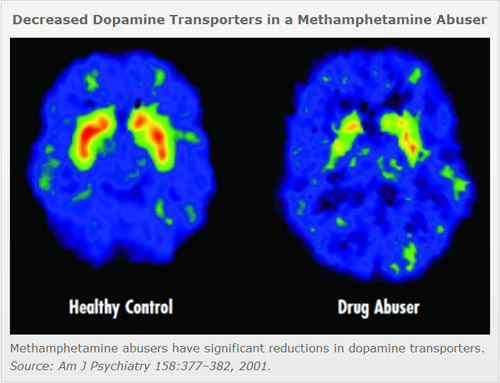
- Drugs, Brain, and Pleasure:
- Most drugs of abuse directly or indirectly target the
brain's reward system by flooding the circuit with dopamine.
- Dopamine is a neurotransmitter present in regions of the brain that regulate movement, emotion, cognition, motivation, and feelings of pleasure.
- The overstimulation of this system, which rewards our natural behaviors, produces the euphoric effects sought by people who abuse drugs, and teaches them to repeat the behavior.
- With repeated drug use, the brain adjusts to the overwhelming surges in dopamine (and other neurotransmitters) by producing less dopamine or by reducing the number of receptors that can receive signals.
- As a result, dopamine's impact on the reward circuit of
a drug abuser's brain can become abnormally low, and the
ability to experience any pleasure is reduced.
- Thus, repeated drug use can reset the brain’s pleasure meter, so that without the drug, you feel hopeless and sad.
- Eventually, everyday fun stuff like spending time with friends or playing with your dog doesn’t make you happy anymore.
- Young People, Drugs, and the Brain:
- One of the brain areas still maturing during adolescence is the prefrontal cortex. the part of the brain that enables us to assess situations, make sound decisions, and keep our emotions and desires under control.
- The fact that this critical part of an adolescent's brain is still a work-in-progress puts them at increased risk for poor decisions (such as trying drugs or continued abuse).
- Introducing drugs while the brain is still developing may have profound and long-lasting consequences.
- Drugs of Abuse, An Overview:
- Marijuana is the most commonly abused illicit substance. This drug impairs short-term memory and learning, the ability to focus attention, and coordination. It also increases heart rate, can harm the lungs, and can increase the risk of psychosis in those with an underlying vulnerability. The main active chemical in marijuana is delta-9-tetrahydrocannabinol, or THC for short, and can detected in urine several weeks or months after initial administration.
- Inhalants are volatile substances found in many household products, such as oven cleaners, gasoline, spray paints, and other aerosols, that induce mind-altering effects. Inhalants are extremely toxic and can damage the heart, kidneys, lungs, and brain. Even a healthy person can suffer heart failure and death within minutes of a single session of prolonged sniffing or "huffing" of an inhalant.
- Cocaine is a short-acting stimulant, which
can lead abusers to "binge" (to take the drug many times in a
single session). Cocaine abuse can lead to severe medical
consequences related to the heart and the respiratory, nervous,
and digestive systems.
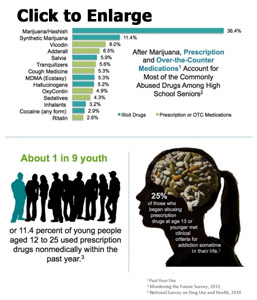
- Amphetamines, including methamphetamine, are powerful stimulants that can produce feelings of euphoria and alertness. Methamphetamine's effects are particularly long lasting and harmful to the brain. Amphetamines can cause high body temperature and can lead to serious heart problems and seizures.
- Ecstasy (MDMA) produces both stimulant and mind-altering effects. It can increase body temperature, heart rate, blood pressure, and heart wall stress. Ecstasy may also be toxic to nerve cells.
- LSD is one of the most potent hallucinogenic, or perception-altering, drugs. Its effects are unpredictable, and abusers may see vivid colors and images, hear sounds, and feel sensations that seem real but do not exist. Abusers also may have traumatic experiences and emotions that can last for many hours. Some short-term effects can include increased body temperature, heart rate, and blood pressure; sweating; loss of appetite; sleeplessness; dry mouth; and tremors.
- Heroin is a powerful opiate drug that produces euphoria and feelings of relaxation. It slows respiration and its use is linked to an increased risk of serious infectious diseases, especially when taken intravenously. Other opioid drugs include morphine, OxyContin, Vicodin, and Percodan, which have legitimate medical uses; however, their nonmedical use or abuse can result in the same harmful consequences as abusing heroin.
- Prescription medication abuse (for nonmedical purposes) is at an all time high. This practice cannot only be addictive, but in some cases, lethal. Commonly abused classes of prescription drugs include painkillers, sedatives, and stimulants. Among the most disturbing aspects of this emerging trend is its prevalence among teenagers and young adults, and the common misperception that because these medications are prescribed by physicians, they are safe even when used illicitly.
- Over-the-Counter (OTC) medications are
products that are available at supermarkets, drugstores and
convenience stores, without a doctor's prescription.
- The widespread myth associated with OTC drugs is that because you don't need a prescription, these drugs must be less dangerous than prescription medicines.
- The most commonly abused OTC drugs include cough, cold/flu, and sleeping medications, as well as weight loss formulas.
- Steroids, which can also be prescribed for certain medical conditions, are abused to increase muscle mass and to improve athletic performance or physical appearance. Serious consequences of abuse can include severe acne, heart disease, liver problems, stroke, infectious diseases, depression, and suicide
- Drug combinations. A particularly dangerous and not uncommon practice is the combining of two or more drugs. The practice ranges from the co-administration of legal drugs, like alcohol and nicotine, to the dangerous random mixing of prescription drugs, to the deadly combination of heroin or cocaine with fentanyl (an opioid pain medication). Whatever the context, it is critical to realize that because of drug-drug interactions, such practices often pose significantly higher risks than the already harmful individual drugs.
- For additional information on specific drugs of abuse refer to the National Institute of Drug abuse, or drugabuse.gov (click here).
- Behaviors, Activities, and
Addiction:
- Commonly referred to as process addictions, these are
behaviors known to be addictive because they are mood altering.
Common process addictions include:
- Compulsive or Pathological Gambling:
- More than 2 million Americans are compulsive, or pathological, gamblers.
- Men are more likely to have gambling problems than women.
- Gambling prevalence is higher among low-income individuals,
- Compulsive Spending:
- Compulsive shoppers sometimes spend money to meet unmet emotional needs.
- Compulsive spending, and gambling, can frequently lead to compulsive borrowing to help support the addiction.
- Exercise Addiction:
- Addictive exercisers use exercise compulsively to try to meet needs that an object or activity cannot truly meet.
- Traditionally women are more likely to be compulsive
exercisers than men.
- Compulsive or Pathological Gambling:
- Commonly referred to as process addictions, these are
behaviors known to be addictive because they are mood altering.
Common process addictions include:
- Rates of adolescent cigarette smoking and alcohol drinking stood
at historic lows in 2011 but marijuana use trended upward, according
to the 2011 Monitoring the Future (MTF) survey.
- Daily use of marijuana rose in all three grades and, among 12th-graders, stood at its highest rate (6.6 percent) in 30 years.
- Four out of ten U.S. AIDS deaths are related to drug abuse.
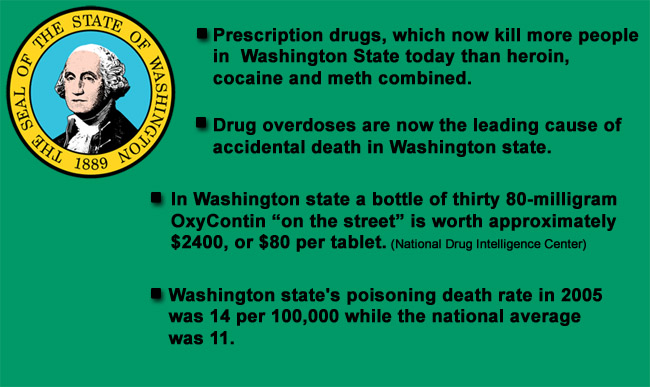
- 1 in 11 people who use marijuana become addicted.
- Prescription painkiller overdoses were responsible for more than 15,500 deaths in 2009.
- Nationwide, drug related deaths now outnumber traffic fatalities.
- Most People who start smoking In their teens become regular smokers before they're 18.
- In the U.S., about 5,000 people under the age 21 die each year from injuries caused by underage drinking, nearly 40 percent (1,900) in car crashes.
- More than 4 in 10 people who begin drinking before age 15 eventually become alcoholics.
- A study of the most popular songs in 2005 found that about:
- 1 in 3 songs said something about drug, alcohol, or tobacco use.
- 3 in 4 rap songs said something about drug, alcohol, or tobacco use.
- 7 of 10 movies showed characters smoking.
- 1 in 3 movies showed people getting drunk.
- In 2007, prescription pain medications like Vicodin and OxyContin were involved in more overdose deaths than heroin and cocaine combined.
- 440,000 Americans die from diseases associated with tobacco use each year.
- Every year, abuse of illicit drugs and alcohol contributes to the death of more than 100,000 Americans
- More than 12 million Americans have tried methamphetamine and 1.5 million are regular users, according to federal estimates.
- The decline in illicit drug use by the Nation’s adolescents
since the mid- to late-1990s has leveled off.
- Among 8th, 10th, and 12th graders, most measures of illicit drug use remained unchanged from 2009 to 2010.
- Marijuana use rose this year—a sharp contrast to the considerable decline of the preceding decade.
- According to the Substance Abuse and Mental Health Services
Administration’s (SAMHSA’s) National Survey on Drug Use and Health,
- 23.5 million persons aged 12 or older needed treatment for an illicit drug or alcohol abuse problem in 2009 (9.3 percent of persons aged 12 or older).
- Of these, only 2.6 million or 11.2 percent of those who needed treatment - received it at a specialty facility.
| Know Your Numbers |
|
Signs and Symptoms of Drug Abuse and Drug Addiction: Although different drugs have different physical effects, the symptoms of addiction are similar. Do you recognize any of the following signs and symptoms of substance abuse and addiction in yourself? If so, consider talking to someone about your drug use.
- Common Signs and Symptoms of Drug Abuse:
- You’re neglecting your responsibilities at school, work, or home (e.g. flunking classes, skipping work, neglecting your children) because of your drug use.
- You’re using drugs under dangerous conditions or taking risks while high, such as driving while on drugs, using dirty needles, or having unprotected sex.
- Your drug use is getting you into legal trouble, such as arrests for disorderly conduct, driving under the influence, or stealing to support a drug habit. Your drug use is causing problems in your relationships, such as fights with your partner or family members, an unhappy boss, or the loss of old friends.
- Common Signs and Symptoms of Drug Addiction:
- You’ve built up a drug tolerance. You need to use more of the drug to experience the same effects you used to attain with smaller amounts.
- You take drugs to avoid or relieve withdrawal symptoms. If you go too long without drugs, you experience symptoms such as nausea, restlessness, insomnia, depression, sweating, shaking, and anxiety.
- You’ve lost control over your drug use. You often do drugs or use more than you planned, even though you told yourself you wouldn’t. You may want to stop using, but you feel powerless.
- Your life revolves around drug use. You spend a lot of time using and thinking about drugs, figuring out how to get them, and recovering from the drug’s effects.
- You’ve abandoned activities you used to enjoy, such as hobbies, sports, and socializing, because of your drug use.
- You continue to use drugs, despite knowing it’s hurting you. It’s causing major problems in your life—blackouts, infections, mood swings, depression, paranoia—but you use anyway.
Warning Signs that a Friend or Family Member is Abusing Drugs: Drug abusers often try to conceal their symptoms and downplay their problem. If you’re worried that a friend or family member might be abusing drugs, look for the following warning signs:
- Physical Warning Signs of Drug Abuse:
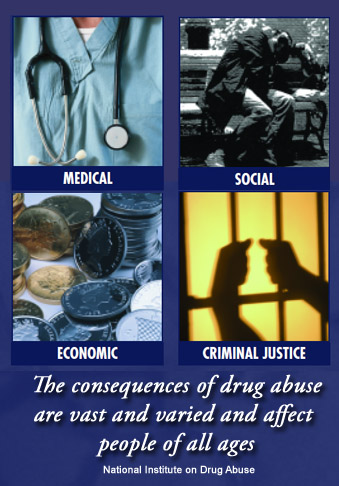
- Bloodshot eyes, pupils larger or smaller than usual.
- Changes in appetite or sleep patterns. Sudden weight loss or weight gain.
- Deterioration of physical appearance, personal grooming habits.
- Unusual smells on breath, body, or clothing.
- Tremors, slurred speech, or impaired coordination.
- Behavioral Signs of Drug Abuse:
- Drop in attendance and performance at work or school.
- Unexplained need for money or financial problems. May borrow or steal to get it.
- Engaging in secretive or suspicious behaviors.
- Sudden change in friends, favorite hangouts, and hobbies.
- Frequently getting into trouble (fights, accidents, illegal activities).
- Psychological Warning Signs of Drug Abuse:
- Unexplained change in personality or attitude.
- Sudden mood swings, irritability, or angry outbursts.
- Periods of unusual hyperactivity, agitation, or giddiness.
- Lack of motivation; appears lethargic or “spaced out.”
- Appears fearful, anxious, or paranoid, with no reason.
Warning Signs of Commonly Abused Drugs:
- Marijuana: Glassy, red eyes; loud talking, inappropriate laughter followed by sleepiness; loss of interest, motivation; weight gain or loss.
- Depressants (including Xanax, Valium, GHB): Contracted pupils; drunk-like; difficulty concentrating; clumsiness; poor judgment; slurred speech; sleepiness.
- Stimulants (including amphetamines, cocaine, crystal meth): Dilated pupils; hyperactivity; euphoria; irritability; anxiety; excessive talking followed by depression or excessive sleeping at odd times; may go long periods of time without eating or sleeping; weight loss; dry mouth and nose.
- Inhalants (glues, aerosols, vapors): Watery eyes; impaired vision, memory and thought; secretions from the nose or rashes around the nose and mouth; headaches and nausea; appearance of intoxication; drowsiness; poor muscle control; changes in appetite; anxiety; irritability; lots of cans/aerosols in the trash.
- Hallucinogens (LSD, PCP): Dilated pupils; bizarre and irrational behavior including paranoia, aggression, hallucinations; mood swings; detachment from people; absorption with self or other objects, slurred speech; confusion.
- Heroin: Contracted pupils; no response of pupils to light; needle marks; sleeping at unusual times; sweating; vomiting; coughing, sniffling; twitching; loss of appetite.
| Source: From "Drug Abuse and Addiction"; Helpguide.org |
| Thoughts for Living |
|
|
Considering Treatment: Addiction is a treatable disease. New discoveries in the science of addiction have led to advances in drug abuse treatment helping people stop the destructive spiral of drug abuse and resume normal, productive lives. Research shows that combining treatment medications, where available, with behavioral therapy is the best way to ensure success for most patients. However, treatment approaches must be tailored to address each patient's drug abuse patterns and drug-related medical, psychiatric, and social problems. When searching for treatment options, consider the following:
Stress Without Drugs: Drug abuse often stems from misguided attempts to manage stress. Many people turn to alcohol or recreational drugs to unwind and relax after a stressful day, or to cover up painful memories and emotions that cause us to feel stressed and out of balance. But there are healthier ways to keep your stress level in check, including exercising, meditating, using sensory strategies to relax, practicing simple breathing exercises, and challenging self-defeating thoughts.
|
|
|
|
|
